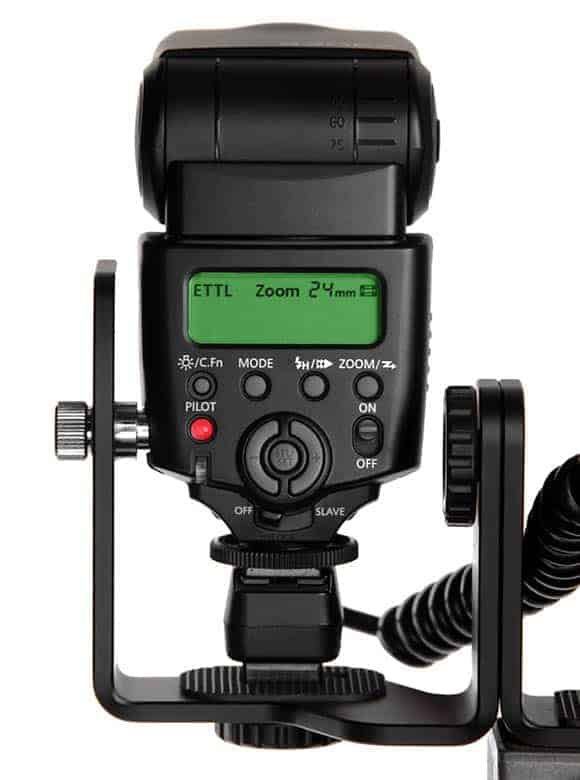
A flash bracket is a simple piece of metal that attaches to the camera on one end and a speedlight flash on the other end.
There are two main purposes for a flash bracket: (1) To allow the photographer to keep the flash in vertical position even when the camera is turned sideways, which would otherwise create strange vertical shadows on the subject, and (2) to get the flash slightly further away from the lens so that it reduces red eye and provides directionality to the light.
Flash brackets are popular among wedding and event photographers because they allow the photographer to use the flash quickly and easily; however, they are losing some popularity because most cameras now have advanced technology for reducing red eye in photos. My personal opinion is that flash brackets are really only necessary if you shoot a lot of event photography or you're considering a second career as a paparazzo. Otherwise, it isn't a necessity for most photographers. However, you could read through this long forum thread to see other opinions.
When the flash is mounted on a flash bracket, it is not directly connected to the hot shoe of the camera as it would be normally. This means the camera has no way of communicating to the flash when it should fire. To solve this problem, photographers use one of two methods to sync the flash and the camera: (1) Through the use of a simple TTL cord (pictured above), or (2) they use a trigger and receiver kit to wirelessly sync the camera and the speedlight flash. Most photographers tend to prefer simply using the TTL cord.
If you are in the market for a flash bracket, you will likely find that the Stroboframe Flash Bracket is a popular choice.
While the predominant use for the term “flash bracket” is what is discussed above, you should also be aware that it can be used more generally for any type of device meant to connect a flash to something else. For example, a bracket on the top of a light stand that holds a speedlight can also be called a flash bracket. Usually, however, a flash bracket is a term referring to the metal piece that puts the flash to the side or above the camera and allows the photographer to change angles.
If you are learning lighting with speedlight flashes, I have two additional resources to help you. The first is my recommended flash photography gear page where I published the results of hundreds of product reviews and show you the very best flash photography gear for the lowest prices. We at Improve Photography spent weeks putting together that resource to help you with your flash photography. Also, you might consider looking at my flash photography online class, where I teach flash photography step-by-step.

So Here’s my problem. The TTL cord goes on the camera fine. I then attach the other end of the TTL cord to the flash bracket. And this is where the problem comes. Most brackets have a wedge and screw closure to hold the TTL cord to the bracket. This is not a secure attachment. At some point the flash head rocks in this arrangement and breaks the flange on the TTL cord. Any suggestions on how to avoid this dilemma?